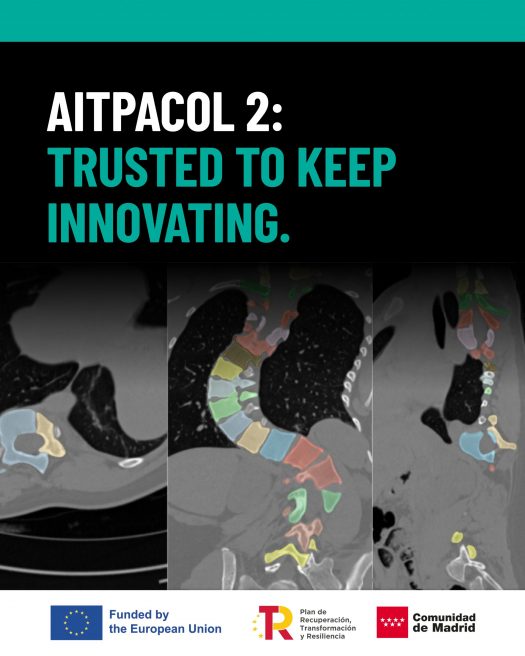Digital Anatomics advances in the application of the most advanced technology in surgical planning with a new grant awarded by the Community of Madrid with European funds
September 29, 2025At Digital Anatomics, we continue to drive innovation and the development of cutting-edge technology applied to spine surgery.
Thanks to a new grant awarded by the Department of Digitalization under the Program of Territorial Networks for Technological Specialization, and funded by the European Union – Next Generation EU, we will continue the AITPACOL2 project, focused on the application of high-precision technological tools in the treatment of spinal pathologies, now in a second phase to optimize the precision of our neural networks.

During the first phase of the project, we developed a system capable of automatically identifying and classifying vertebrae from CT scans and predicting trajectories, making surgical planning faster and more accurate. This technology, based on deep neural networks, has already proven effective in helping reduce analysis times.
With this new support, Digital Anatomics will be able to redesign the platform’s cloud-based technological architecture, improving its capacity for multiple users to work simultaneously without interference or delays.
Thanks to this optimization, planning processes will be carried out in parallel, allowing for a much faster response in complex or urgent surgeries.

The project proposes a comprehensive solution that:
- Automates complex clinical tasks: from a CT scan, the system automatically generates segmentations and surgical trajectories, which only need to be validated by the surgeon.
- Enables collaborative and simultaneous work: the new multi-user cloud design streamlines the workflow between the clinical and engineering teams.
- Connects directly with personalized manufacturing: the results are integrated into design systems for the creation of custom surgical guides, reducing production times.

This development reinforces Digital Anatomics’ commitment to the digital transformation of the healthcare sector, bringing cutting-edge technology closer to clinical practice and helping hospitals and professionals access faster, safer, and more accessible tools for the planning of complex surgeries.